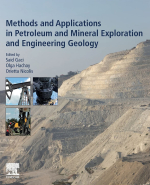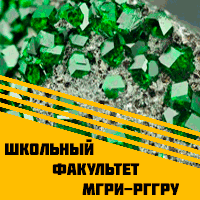Добрый день, Коллеги. Важное сообщение, просьба принять участие. Музей Ферсмана ищет помощь для реставрационных работ в помещении. Подробности по ссылке
Methods and applications in petroleum and mineral exploration and engineering geology / Методы и их применение в разведке нефти и полезных ископаемых и инженерной геологии
In Chapter 2, Microseeps as Pathfinder and Regional Filtering Tool in Petroleum Exploration, Tedesco discusses the aid of microseeps in petroleum exploration. As shown in previous research (Tedesco, 1995), the use of surface geochemistry can enhance the probability of success from 10% to 60%. Surface geochemistry offers valuable information regarding the presence or absence of hydrocarbons in the soil strata that have migrated from the subsurface. However, it is noteworthy to underline that the presence of a surface geochemical anomaly does not always forecast a productive discovery, but hydrocarbons are generally encountered. Surface geochemistry provides very helpful exploration information when combined with collected data inferred from subsurface and seismic methods.
Following on previous researches (Tedesco, 2010; Heckel, 2013) on Middle Pennsylvanian Marmaton, Cherokee, and Atoka Groups in the Mid-continent United States, Tedesco in Chapter 3, Correlation of Stable Carbon Isotope, Reflectance, and Total Organic Carbon That Help Provide a New Stratigraphic Framework for Defining Desmoinesian and Atokan Sediments in the Denver and Cherokee Basins in the Mid-continent United States, demonstrates that stable carbon isotope, total organic carbon, and degree of pyritization (DOP) data can be used to sketch a chronostratigraphic correlation and paleoenvironmental reconstruction for these sedimentary rocks. DOP results suggest that the Atoka and Middle Marmaton were deposited under oxic to suboxic conditions, while the upper Cherokee and lower Marmaton represent euxinic environments where they were sampled. <...>




